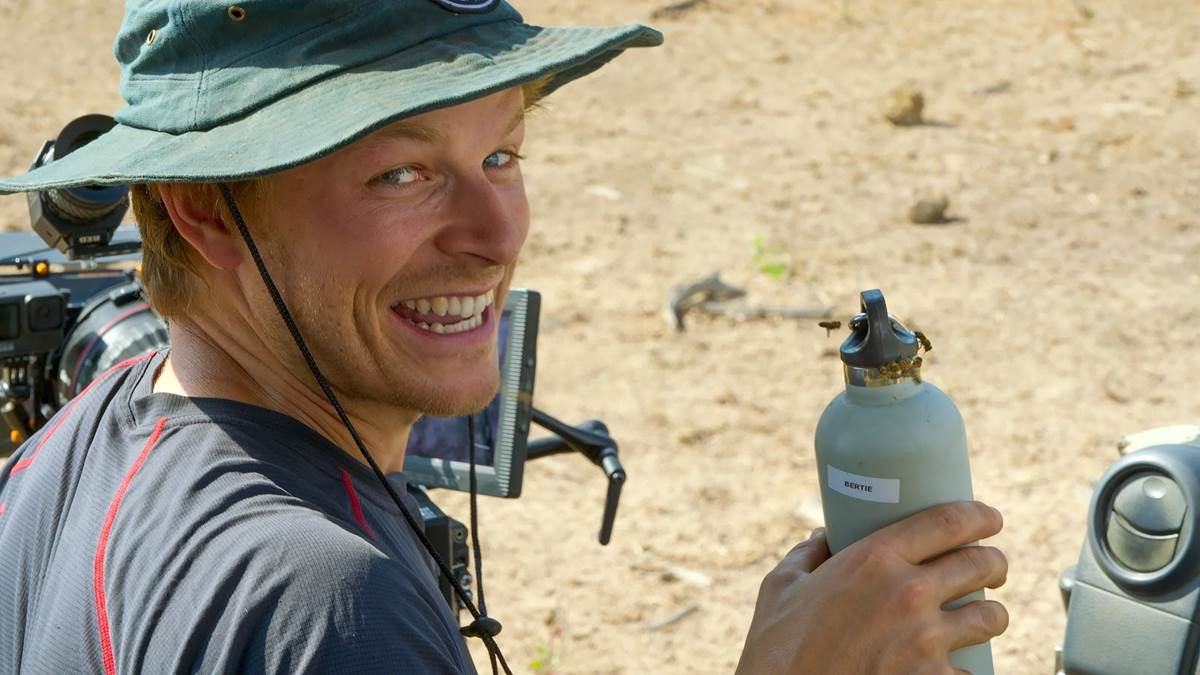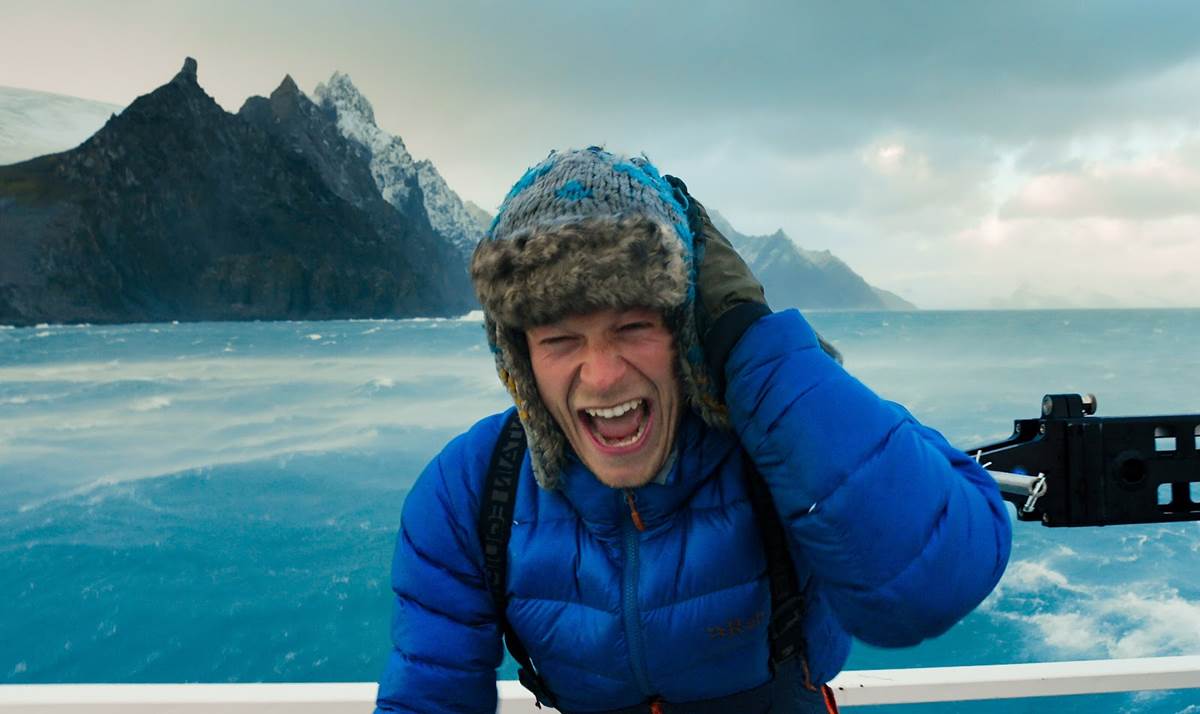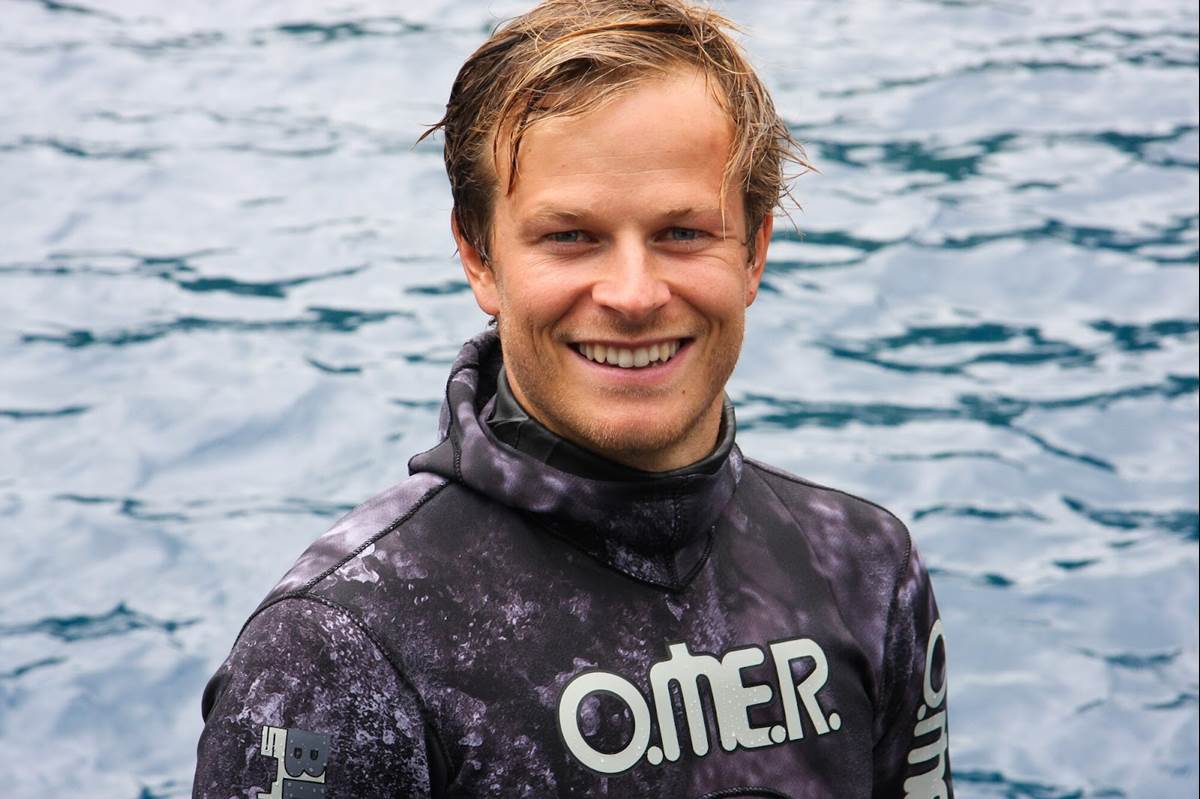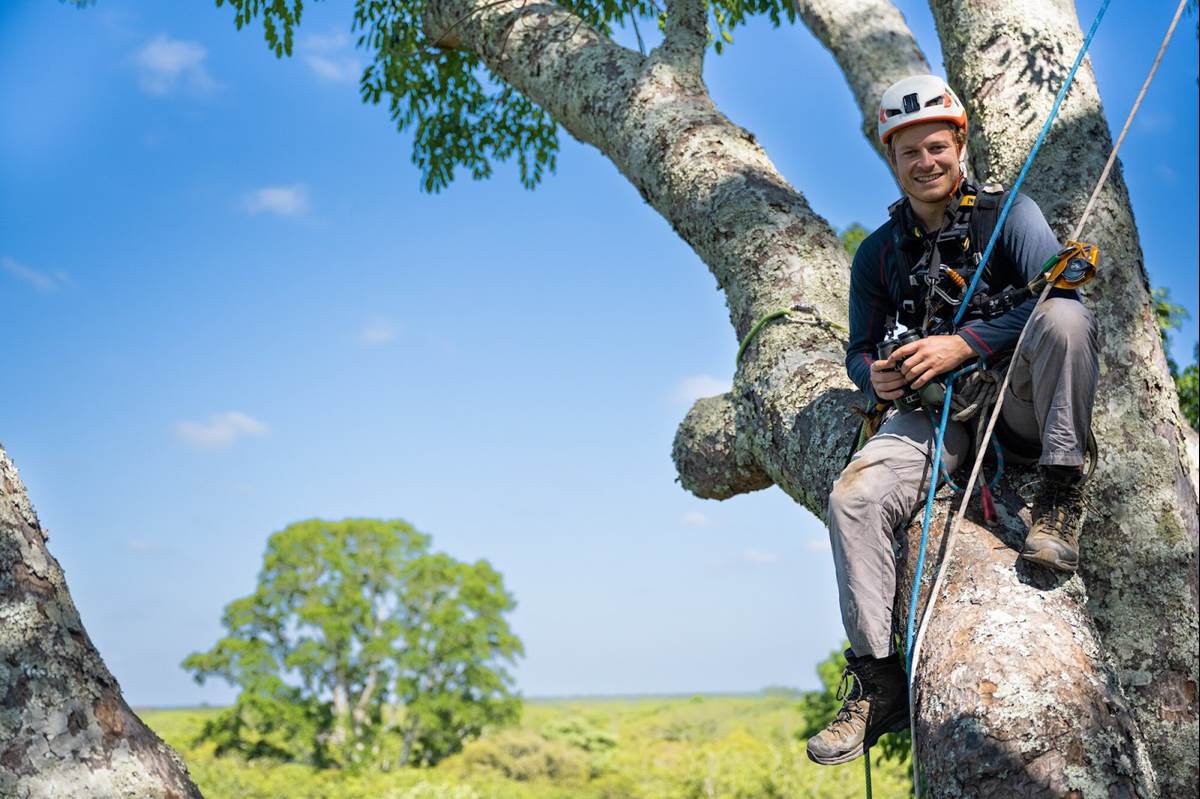National Geographic is gearing up to take audiences up close with some of their favorite animals with the new series Animals Up Close with Bertie Gregory. In preparation for the new series, I got a chance to speak with Bertie Gregory himself about what fans can expect, as well as some other interesting topics.
Disney+ subscribers might be familiar with Gregory thanks to his recent series, Epic Adventures with Bertie Gregory. The adventurer explained that Animals Up Close is essentially a new title for that series while the content will remain mostly the same.
“What we found on Epic Adventures was that the most engaging and intimate stories were always when we followed, rather than just looking at the big kind of wildlife gatherings, was to focus in on individual animals and families and so that’s really what Animals Up Close is, it’s an evolution of Epic Adventures,” Gregory said. “We still go to the epic wildlife gatherings, we’re still taking the viewer on a journey with the adventures, the highs and lows, but we really focus on individual animals and families to take us on that journey.”
National Geographic puts out a lot of content with many of the project focus on very similar subject matter. And yet, Gregory’s show stands out and feels unique thanks to that intimate storytelling approach.
“The best example is the puma episode, the Patagonia pumas, it will be the first episode. In that, we weren’t just following pumas, we went back to find one puma in particular because four years ago, I filmed this puma when she was a little cub. She was this fluffy ball of loveliness and totally useless at hunting and reliant on her mother,” Gregory said. “And so we went back four years on to find out how she was doing. And amazingly, not only has she survived, but she’s now a complete boss mom herself and she has two of her own cubs. So we spent 51 days, it was the most shooting of any episode. 51 days on that episode, following the highs and lows of this female puma as she desperately tries to feed her cubs.”

Bertie Gregory hydrating while filming in the Zambian sun. (Credit: National Geographic/George Pagliero for Disney+)
Being someone who goes on such epic adventures for a living, I wanted to know about the most adrenaline-inducing experience Gregory has had while filming. He made sure to make it clear that, while the predators he films are incredibly powerful and potentially dangerous, it’s “human making bad decisions that lead to animals being dangerous.”
“Actually, the most dangerous thing that we did on this project was the environment that we exist in. So in the Galapagos episode, we were filming sea lions and marine iguanas and marine iguanas, they look like mini Godzillas and they eat seaweed. Which doesn’t sound particularly exciting, except the best place to find the most nutritious seaweed is where the waves and the currents are biggest,” Gregory explained. “And so this lizard, you don’t normally think of a lizard swimming in the sea, this lizard jumps in the ocean and then duck dives 10-foot waves like a pro surfer just to get out to its food. So we got in the water to try and film that and in order to show how amazing they are in the waves, we had to be in the waves too. And let’s just say, I’m not nearly as good at duck diving waves as a marine iguana is so while the iguana is making it look very easy diving under waves, I was just getting smashed around.”
And that wasn’t even the most intense moment for Gregory and his crew while filming the new episodes. He explained that while filming forest elephants for another episode, he and his team ran into a sticky situation with some difficult weather.
“We set up a canopy camp, 120 foot up a tree right in the jungle. We lived up this tree. And then we were set up near to a clearing, it was one of the only place where you could see the elephants from any kind of distance. They basically made a clearing in the forest, digging up the trees, knocking them over. And at the edge of that clearing, we set up a filming platform, but we didn’t want to sleep right at the edge of the filming platform because of disturbance, so to get between the canopy camp – 120 foot up a tree – the filming platform – 30 foot up a tree – we didn’t want to go on the forest floor, so we rigged a 300-foot zip line. So we zip lined, it was definitely the coolest commute to work I’ve ever had,” Gregory said. “But we were in the canopy camp one night and this huge tropical storm rolled in and loads of lightning from all directions. And our camp, we lived in these things called portaledges. It’s a tent they use for big wall climbing and it’s got lots of metal in it. So in a lightning storm, you don’t want to be up a tree with lots of metal. So we planned for this. We rigged up another zip line to what we called the ‘bail out tree,’ which is basically a tree with a net that we rigged with no metal. So in the middle of the night, our ropes expert, Waldo, made the call and said we’ve got to evacuate the canopy camp. So imagine in the pitch black, with lightning flashing everywhere, torrential rain, having to clip into a zip line, 120 foot off the forest floor and then having to pull yourself along this line.”
Even with all that, Gregory only admits to having one brief moment of doubt.
“When I was about halfway across that rope, with all the lightning going on I was like ‘have we made good life choices?’” he laughed.
With Gregory constantly traveling the world for work and visiting so many amazing places, I wanted to know what a vacation looked like for him.
“For this project, we did 219 filming days. And that was within a year and I also did some other behind the camera projects during that year,” he said. “So I wasn’t home much. So I guess the time for the vacation thing, it’s more just like recovery than vacation. So being at home is nice.”
While Bertie isn’t spending much time at home watching television, he did mention how cool it was for him to see his own show on Disney+, along with his favorite movie of all-time: Finding Nemo.
“You can tell watching the film, they did some proper research, on like the different species,” Gregory said of the Pixar film. “I’m not sure I’ve ever seen a bunch of baby fish riding on the back of an eagle ray but you know, Mr. Ray is a spotted eagle ray and yeah, I think they did good.”
Mostly, Gregory is just happy seeing the National Geographic tile on the home page every time he opens Disney+.
“What’s really exciting about it, other than the fact that its gets my mom excited, is that it’s just cool to see nature alongside huge iconic brands like Marvel and Star Wars,” he said. “It’s just awesome to see National Geographic alongside those and the natural world is in a really difficult state and any opportunity we can take to get people excited about the natural world and what we can do to fix it and celebrate some of the good new stories, all of that stuff is in the show.”
Finally, I wanted to revisit a virtual event Gregory did for National Geographic back in 2020, during which he told a story about a presentation he gave to some children. He said he was telling the children about his favorite animal: the peregrine falcon. Unsatisfied with just knowing what was at the very top of Gregory’s list, one child asked him “what is your second favorite animal?” After some careful consideration, Gregory’s answer was the macaroni penguin, which he easily recalled in this interview. Naturally, I needed to continue the list and find out what Gregory’s third favorite animal is.
“I think it would have to be killer whales,” Gregory laughed. “I’ve always been fascinated by them and what’s really cool about them is killer whales around the world, I guess, from a distance all look the same, but actually when you look at them close up, all of the different types that you find around the world do look different. Like you can tell that a killer whale is a B1, wave-washing killer whale in Antarctica compared to other killer whales. And so, what’s amazing about them is they are all so different and they have used their incredible intelligence to create a culture of how they exist and I love how that differs around the world. And they don't interbreed with each other, they can’t talk to each other, they can’t communicate with each other because their communication strategies have diverged and they're using different frequencies and that to me is fascinating that a wild animal has a culture that is passed down through the generations.”

Bertie Gregory on boat in harsh Antarctic weather. (Credit: National Geographic/Will West for Disney+)
You can see Bertie Gregory get up close to some killer whales when Animals Up Close with Bertie Gregory comes to Disney+ on September 13th.


